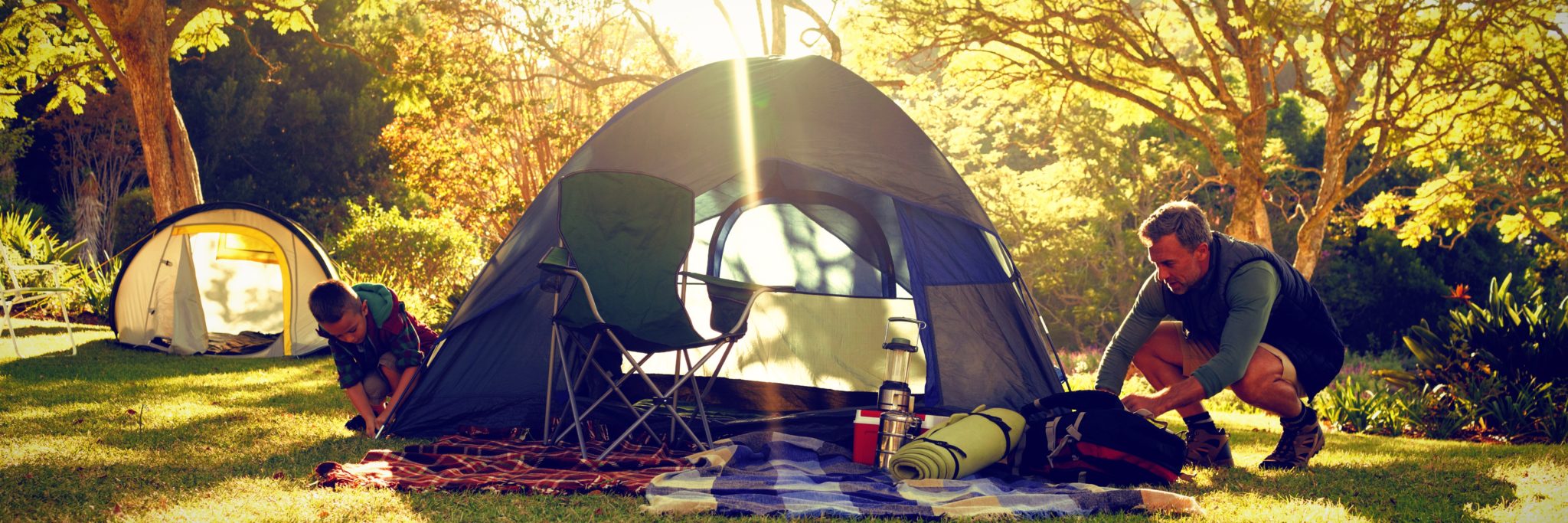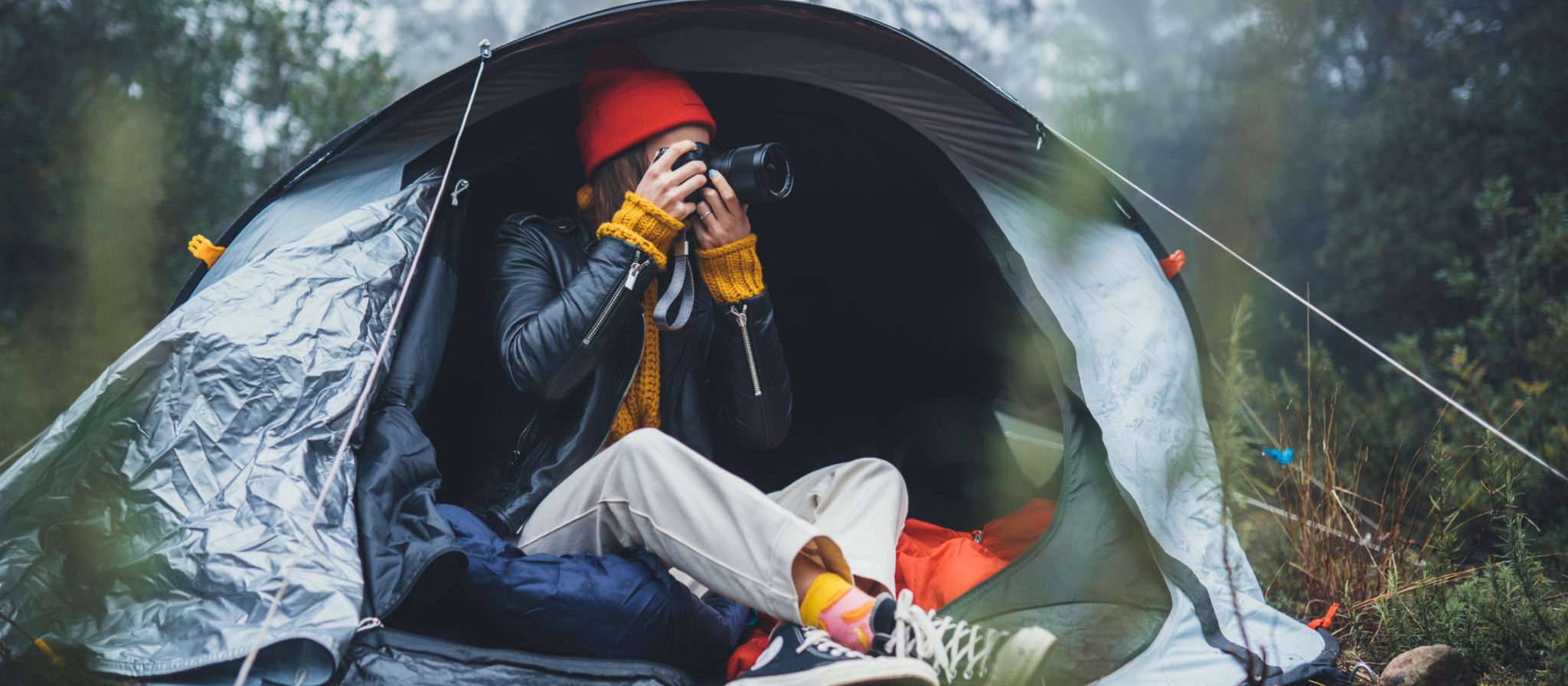BY Nick Bulanda
Published January 23, 2021

How to Clean a Tent that Smells – A Step-by-Step Guide
When organizing your next camping trip, we strongly suggest taking your tent out before leaving home and look it over. Mold and mildew in a tent is all too common, and it’s something you want to take care of well before you plan to leave. In this guide, we’ll tell you exactly how to clean a tent that smells, making it camp-ready. If you follow our advice, you’ll also strongly decrease the chances of mold and mildew forming again. Read on, and check out the rest of our site for more camping tips!
Step One: Look for Stains, Mold and Other Issues
The first thing you’re going to want to do is pull your tent out and lay it across your yard. Take your time and inspect the tent, getting close up and covering every section. This first step is a good idea for anybody preparing to go camping, and if you’re lucky it may be the only step. If you don’t find a smell, and don’t spot any mold or gross stains, you should be good to go!
However, if you’re reading this guide, there’s a good chance you’ve already discovered a strange smell. If this is the case, carefully look through the material of the tent and look for any sign of visible mold, or places where the smell emanates strongly from. Take note of these spots, as they’re going to be points you want to focus on through the entire cleaning effort. After all, if you can eliminate the source of the problem, the rest should be a piece of cake.
Step Two: Spot Clean with Mild Soap or Tent Cleaner and Soft Brush
When you identify the trouble areas, the next thing you need to do is spot clean them. For this step, you’ll need to choose your preferred cleaning product. You can either pick a mild soap, like something you use for your hands. If you have some deep cleaning to do and don’t think that’s going to be enough to take care of it all, there are other solutions. Sporting goods stores and many outlets online offer cleaning products specifically meant for tents. You can also use something like an enzyme cleaner that specifically targets mold.
After you figure out what cleaning solution you’re going to use, start spot cleaning the tent. Use a soft brush. It has to be something that’s not too abrasive, or it can damage your tent. A toothbrush can even be a good option, or anything somewhat soft. Start cleaning with soap or solution, the brush, and maybe even a little bit of water. Dig in there and don’t stop until the mold or stains are gone. If it seems like they just aren’t coming out, you may have to take more extreme measures. However, for almost all situations, this is enough to do the job.

Step Three: Soak the Tent
When you’ve finished spot cleaning, it’s time to soak the tent in some room temperature water and soap. If you have a large laundry sink with a faucet, this is an excellent place for this step. If not, a plastic bin can often work. Fill up the container with soap and water, probably about halfway. From there, completely unzip your tent and make sure all areas are exposed.
Dunk that tent into the water and let it soak. The amount of time you want to let it soak depends on the size of your tent. The larger it is, the longer you want to leave it in! If you can, drain the water out after that and rinse the tent, filling the sink with more water. This will help clean the soap off. Before you take the tent out to dry, make sure to rinse all soap off the inside and outside of the tent.
Step Four: Air Dry – Out of the Sunlight
Next, you’re going to want to take the tent outside and let it air dry. Pick a place where you can hang the tent up with plenty of surface exposed. However, it’s important not to let your tent dry in direct sunlight. This can fade the tent, or worse, loosen and destroy the fabric. While it’s hanging up, check on the tent periodically to see how well it’s drying, and whether it’s drying evenly. If it’s not, re-arrange the tent so the wet area has better exposure to the air.
It should just take a few hours and your tent will be dry. However, this of course depends on weather conditions, moisture in the air, and more. Wait for however long it takes to dry. If you put your tent away while it’s wet, you’re just asking for more problems. Wait until the thing is fully dry, and then move on to the final step.
Step Five: Second Spot Clean
Before you pack your tent back into storage or into your vehicle, it’s worth doing one last look over. Double check all the trouble areas for earlier, and if there’s anything left go ahead and do one more spot cleaning. Use the same solution as before, or something different if that didn’t work well enough for you. After this, go ahead and let the tent dry once again and put it away.

Additional Tips on How to Clean a Tent that Smells
We’ve covered the basics, but there’s still some information we want to leave you with before you head out. This advice is meant to help improve your trip, and keep your tent free from mold and mildew so you won’t have to deep clean it every time you want to go camping!
Store Your Tent in a Box on a Shelf
The best way to store your tent when you aren’t using it is to put it in a closed box or bag and keep it off the floor. While it will still certainly accumulate some dust, it should be mostly protected from the elements. One of the cardinal mistakes for tent maintenance is to leave your tent out in the air when you aren’t using it. Even if it’s inside your garage, it’s not a great idea. You always want to keep your tent secured when not in use, for a number of reasons. There’s no doubt it’ll get mildew, ripped up, or potentially chewed up by some critters. It’s best to keep it safely tucked away when in storage. If possible, keep the tent in a closet inside the house. We find that’s typically the best place, as long as you have room.
Don’t Set Up Your Tent Directly onto the Ground
When you’re out camping, your tent is surely going to get a little dirty. However, it’s a good idea to limit your tent’s contact with the ground as much as possible. By setting up your tent on top of a tarp, canvas or something along those lines, you’ll be doing a lot to maintain the health and cleanliness of your tent. There are items available for you to place your tent on that can even improve comfort. Check out the options available and find one that suits you!
Keep the Inside of Your Tent Clean
If you can prevent sand, dirt, rocks and other debris from making its way inside your tent, you’ll be in good shape. Not only can these make sleep more uncomfortable and annoying, but it’s also not good for your tent. By ensuring you and others take shoes off before coming in the tent, you can prevent a lot of that stuff from coming in. This will help you out during clean-up too!
Final Thoughts
This was our guide on how to clean a tent that smells, and we hope you found it helpful. If you have any other tips or personal experiences you’d like to share with us, the comments section is waiting for you right down below! Your next camping trip will be all the better if you can head into it with a tent that smells fresh. Feel free to check out the rest of our website to learn more about tips and gear that you can use to improve your trips into nature.


